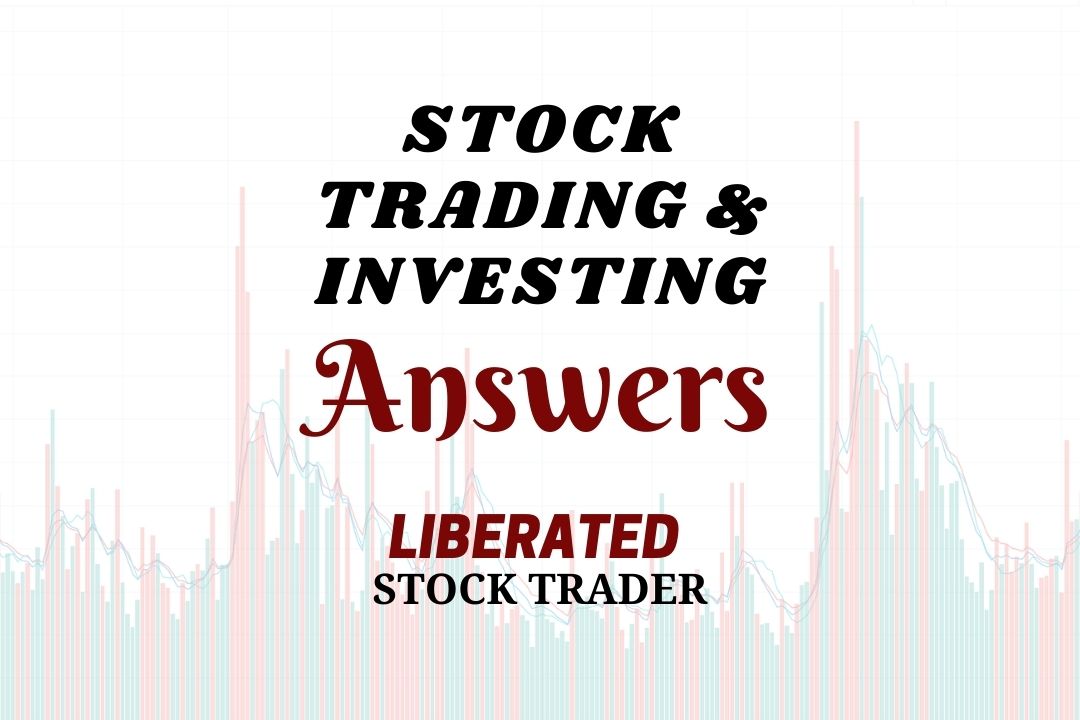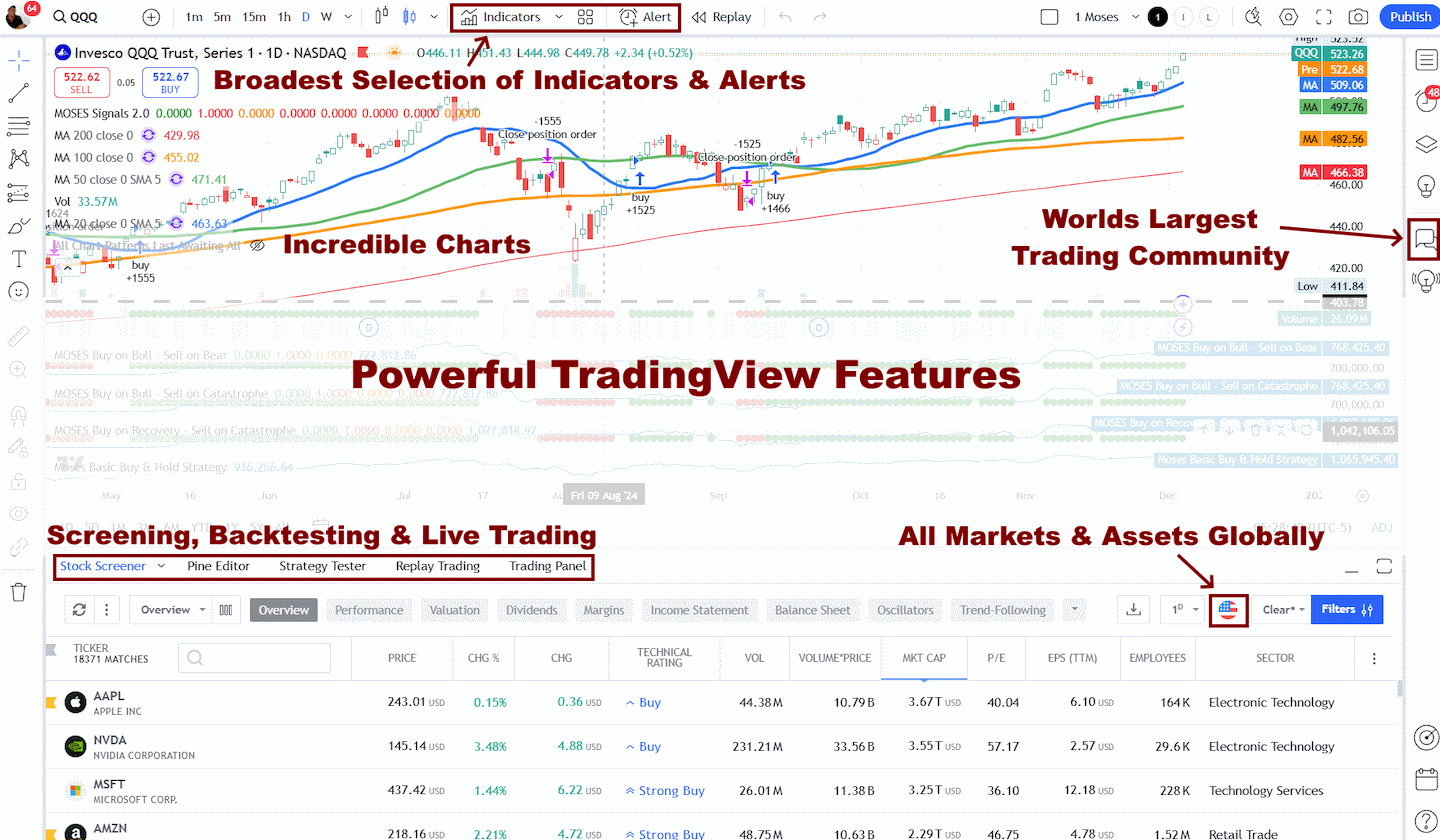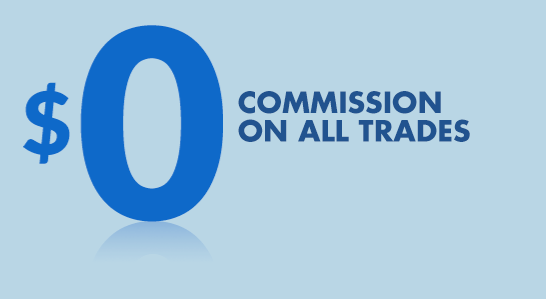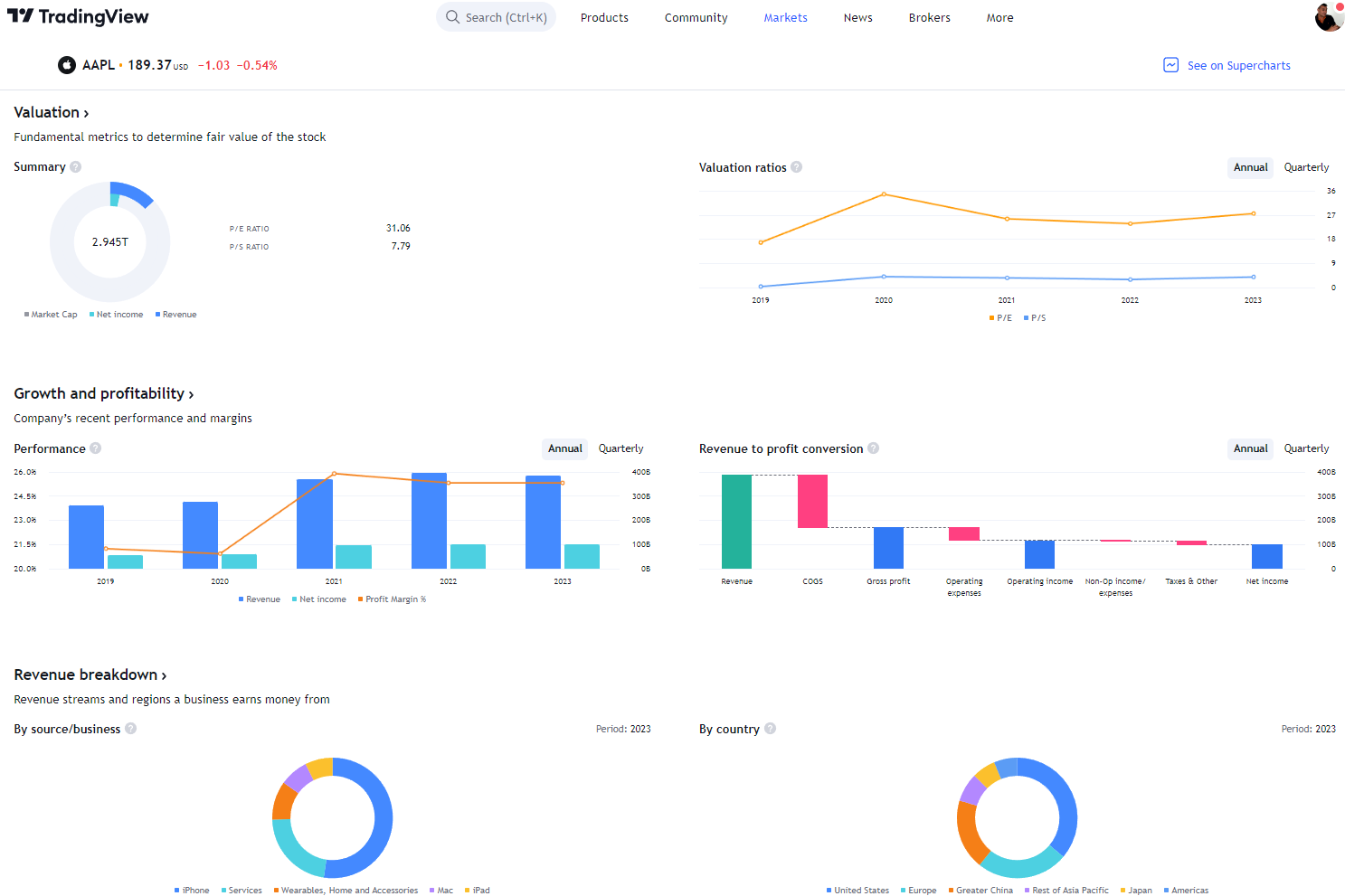Gain insights from a seasoned ex-Wall Street trader with 40 years of experience, as he imparts knowledge on leveraged 3X ETF trading. Explore the intricacies of risks, rewards, and effective strategies.
Leveraged 3X ETF trading is a high-risk, high-reward investment strategy that has gained popularity in recent years. With the potential to amplify returns by three times or more, it has attracted many traders looking to make quick gains in the stock market.
However, before entering the complex and volatile world of leveraged 3X ETFs, it is important to have a solid understanding of the fundamentals and intricacies involved. This is where our seasoned ex-Wall Street trader comes in.

What Are ETFs?
Exchange-traded funds (ETFs) are a simple and effective way to invest in nearly every market segment, industry, index, and global stock market.
There is currently a huge variety of ETFs that are designed to track the performance of any of the following:
- A stock market index – The S&P500 (Ticker: SPY)
- A commodity – Gold (Ticker: GLD), Silver (Ticker: AGQ)
- An Industry – Global Telecoms Sector (Ticker: IXP)
- Size of Stocks – Small Cap Value (Ticker: VBR)
- A Country – China Bull (Ticker: YNNN)
- A Currency – British Pound Trust (Ticker: FXB)
- Futures Contracts – Short-Term S&P500 Futures (Ticker: VXX)
ETFs trade like stocks on the open market, which is beneficial as it means a good level of liquidity and lower transaction costs. As with any financial transaction, you need to know the character of the instrument you are using.
ETF Traders vs. Investors
To enter the trading arena, stock market professionals know their game backward and forward.
In the stock market, two types of clients enter the market daily. The first is the Investors, who usually say they are in it for the “long-term,” then there are the traders who are in the market every day, buying and selling constantly as price gyrates from highs to lows, seeking the quick buck profit.
They are two entirely different beasts altogether.
The Investor
They pick a potential stock using their fundamental research. They make a point of trying to understand fully the business they are investing in. With that, they gain a certain level of understanding and a belief that the company’s business model is solid.
They read all the magazines and newspapers to stay on top of the latest stock news wherever it’s available.
They may even have a technical background, know where their stock is on the chart, and will attempt to buy, accumulate, and hold shares over a long ( 2 -5 Year) time horizon.
The Trader
Perhaps the more technically savvy and short-term gifted of the two, the professional trader lives in a world where minutes, even seconds, can seem like a lifetime. Usually well-financed, they seek to profit from even the smallest price differences, day trading in and out, sometimes dozens of times a day, bullish one moment, bearish the next, to extrapolate a very quick profit and move on to the next trade.
In some respects, they are highly compulsive, fixated, and perhaps even obsessed with the stock market’s day-to-day, hour-to-hour price movements.
I should know. I am one of them.
I have been living and breathing, trading the market every business day for many years and working 60-70 hours a week from home in retirement in the mountains of New York. I work with the defined purpose of being right more often than wrong.
I continually update my charts on paper with a mechanical pencil throughout every day, seeking the exact moment when there is a price inflection breakout. Then, I go fully capitalized to trade the opportunity, getting in and out with the maximum amount of profit for the shortest risk time available.
As a trader, I use leveraged 3 X Bull / Bear ETFs to trade the market every day, capitalizing on both the long and short sides of the market, depending on an existing defined trend.
So, how does one make money in the market by continually using these leveraged 3 X ETFs? Keep reading to find out.
Why Trade 3X Leveraged ETFs?
The answer to the “Why trade 3X Leveraged ETFs” question is amazingly simple. It’s about the PROFIT POTENTIAL you can make in the quickest amount of time for simply being correct in your market opinion of a stock or index movement.
And rather than waiting days or weeks to be proven correct, in the world of leveraged 3X ETFs, that reward can come in seconds or minutes from purchase.
Think about that for a moment.
Then, understand the lure of such investment vehicles, which are at the tip of your finger every day in the stock market.
How Do Leveraged ETFs Work?
They are what they say they are; a 3X leveraged ETF is a vehicle calibrated to 300% or triple the gain or loss of a stock or index’s price movement.
If the Dow rises 1%, then the 3X Leveraged ETF returns 3 %
But unlike a mutual fund, which rewards an investor with its closing price each day, ETFs can be traded in some instances around the clock, allowing a trader to get in and get out frequently throughout each trading day.
Thus, a trader can reap a substantial return in a very quick amount of time.
That is, as I say, the lure.
However, the lure of such a vehicle comes with substantial risk. I want to write about those risks first, almost as required Disclosure.
18 Liquid ETFs for Leveraged Day Trading
This is the list of tried and tested ETFs I use, typically ETFs for the major index averages, Dow Industrial Average, S&P 500, and the Nasdaq 100
3X Index ETFs for Long Positions:
- SPXL: Direxion’s 3X LONG S&P 500
- UDOW: Pro Shares 3X LONG Dow Jones Industrial Average
- TQQQ: Pro Shares 3X Long Nasdaq 100
3X Index ETFs for Short Positions:
- SPXS: Direxion’s 3 X SHORT S+P 500 ( Tight Bid/Ask Spreads 24/7)
- SDOW: Pro Shares 3 X SHORT Dow Jones Industrial Average
- SQQQ: Pro Shares 3 X SHORT NASDAQ 100 (Tightest Bid/Ask Spreads Available 24/7)
ETFs for GOLD
- NUGT: Direxion Daily Gold Miners Index Bull 2XShares
- DUST: Direxion Daily Gold Miners Index Bear 2X Shares
ETFs for Interest Rates
- TBT: ProShares UltraShort Lehman 20-Year Treasury
- TMV: Direxion’s 3X Short 20-Year Treasury Bond ETF
ETFs for Crude Oil
- UCO: ProShares Ultra Bloomberg Crude Oil
- DRIP: Direxion Daily S&P Oil & Gas Exp. & Prod. Bear 2X Shares
ETFs for Natural Gas
ETFs for Technology Stocks
ETFs for the Russell 2000 Index
The Risks of Leveraged ETFs
The risks of 3X leveraged ETFs can easily exceed the risk tolerance of many traders because returns are magnified by 300%; if one is wrong about the direction of the purchase, the LOSS potential quickly becomes apparent.
Your assumption of a quick in and out gain can suddenly become a very leveraged loss, causing a large potential drawdown in a trader’s account and tying up capital that could be used for other potentially money-making trades.
Thus exact TIMING is CRUCIAL to SUCCESS in the world of leveraged ETF’s trading.
To put it as simply as possible, to trade these types of vehicles successfully, one must enter a position at the OPTIMUM time and exit the trade in the same way.
And that is not an easy thing to do.
No matter how gifted you may think you are, the daily price fluctuations in the market itself may cause you to get it EXACTLY WRONG in the short term. I’m talking about minutes, and because of the 300% movement, the price may immediately reach your STOP, only to see it reverse and soar to the exact place you thought it would go. You are stopped and left staring at the screen, realizing the gain you anticipated happened without participating. I have been there, and there is no worse letdown than that.
Leverage indeed works both ways and because of that leverage, it is not recommended that you hold these 3X ETFs overnight.
The reason is the overnight gaps that frequently happen throughout the trading week.
Say an index opens the day on the NYSE down 1%; if you had held a bullish 3 X ETF overnight, your immediate return on the open would be – 3%. Imagine being down 3% overnight, just for holding position 24 hours.
That is why I recommend that you LIMIT the times you hold a 3X leveraged ETF only when you are almost certain of continuing a trend the following day.
Position size is crucial to success in trading 3X Leveraged ETFs.
My thorough testing awarded TradingView a stellar 4.8 stars!
With powerful stock chart analysis, pattern recognition, screening, backtesting, and a 20+ million user community, it’s a game-changer for traders.

Whether you're trading in the US or internationally, TradingView is my top pick for its unmatched features and ease of use.
Explore TradingView – Your Gateway to Smarter Trading!
How to Trade Leveraged ETFs Overnight
Trying to get a handle on trading 3X ETFs during regular market trading hours on the New York Stock Exchange is one thing. Yet, it involves a whole other set of risk elements that must be known and considered before doing so in overnight trading.
For the most liquid ETFs, meaning those with high liquidity and tight bid/ask spreads, it is possible to continue trading and trade seamlessly in both after-hours and premarket hours. Most firms offer the trader an additional 6-7 hours that same day to buy or sell positions.
Overnight trading of 3 X ETFs differs from regular market-hour trading in the same way it does with other securities.
There is less stock out there; thus, the opportunity to obtain the tight bid/ask of regular market hours is more difficult. That is why one must look only for those 3X ETFs that offer the tightest bid/ask spread possible in regular and overnight trading hours. Doing so will ensure that your risk is “managed” in the best possible way 24/7.
As many investors and traders know, overnight NEWS items hit the marketplace regularly, some of which will have a material impact on either stock or index pricing the following day at the open.
Day Trading ETFs Overnight – The Advantages
A key advantage of trading 3X ETFs in overnight trading is that it allows the trader to immediately react to that news item and enter or exit a position without suffering the fate of other investors. This prevents you from being punished by the regular “Gap Open” on the overnight news, which is so prevalent in the market.
That risk, and that risk alone, should make a trader look to HEDGE themselves in any way possible to avoid the serious potential drawdown to a trading account that happens when overnight news items all hit at the beginning of the trading day and during normal market hours.
That said, another key advantage of owning and trading 3 X ETFs is that hedging is immediately available during overnight trading hours.
3 X ETFs, both Long and Short, trade off the underlying index futures trading contracts in overnight trading when cash index pricing is unavailable. That is an important point.

One must be familiar with the futures markets, the available price charts, and how they work to be completely aware of the risks associated with that type of trading.
I have always kept the S&P 500 and Dow Futures daily and weekly charts updated so I can react quickly and decisively to overnight and regular trading-hour price moves.
Futures prices “lead” the cash index prices all the time, so it is particularly important to know those instruments well in overnight trading.
Leveraged ETF Strategy Example
In the United States, on 11/8/16, Election Night for President Trump, the Dow Jones Industrial Futures swung from a loss of nearly 800 points overnight to being only fractionally down at the open of trading on the NYSE.
If one had owned a short position in a 3 X ETF in the Dow, as I did with Pro Shares 3 X Short ETF SDOW, a trader would have realized a substantial profit in overnight trading hours by being short; that was GONE by the time of the US market OPEN on the NYSE.
That downside gap in Dow Futures of almost 800 points remains open on the chart to this day, essentially price action in the futures market that was never seen during regular trading hours.
In summary, overnight trading in the United States is filling a great need for investors and traders to hedge and profit from news and price changes in markets around the globe and around the clock.
What happens in trading in the Chinese, German, and European markets, along with other emerging market country markets overnight, definitely impacts the US market on the opening of trading every day throughout the year.
Isn’t it a huge edge to take clear advantage of every opportunity 24/7 in the marketplace rather than be limited to just daytime trading hours each day?
In the world of 3X ETFs, that advantage is given to professional traders/investors every day. They are taking advantage of it, shouldn’t you?
Try TradingView, Our Recommended Tool for International Traders
Global Community, Charts, Screening, Analysis & Broker Integration

Global Financial Analysis for Free on TradingView
I hope you enjoyed the article and I have opened your eyes to the world of ETF Trading.
Firstrade vs. E-Trade, Schwab & Fidelity: Full Test & Comparison
More articles related to funds
- The Difference Between ETFs and Mutual Funds is Capital Flow
- ETFs vs. Mutual Funds: The Difference Impacts Your Gains
- What is an Index Fund & How do Index Funds Work?
- How to Invest in Index Funds to Maximize Long-term Profits
- ETFs vs. Mutual Funds vs. Index Funds: Simply Explained
- Investing in Index Funds: Everything You Need to Know
- ETFs vs. Stocks. 7 Reasons ETFs Are Better

Joe,Considering the fact that the majority of money managers produce lower percentages than the S&P ,…doing a little better ,even ,conservatively ,in longer time frames than a day trade would be great for a portfolio without the need to keep up with dozens of stocks.
Is that possible/ conceivable ?…Would you recommend or not recommend? If yes,what indicators would you recommend ? I assume ,that based on your article,that utilizing leveraged etf s would be out of the question?
What indicators do you utilize for Day Trades?
I would answer your question that using ETF”s of this type
is highly speculative, high risk, and must be monitored 24/7
For day trading I use a 15 Min Price chart, that I update continually on graph paper with,mechanical pencil,
drawing trend line continuous support/resistance lines out in time (TED)
You must know your number on whatever ETF you decide to use, like the back of your hand,
and be prepared to act (Open order)
PRICE to me Ben is the only thing that matters to a trader
MUSY use stops at all times ! NEVER AVERAGE DOWN!
There is always another trade.
As far as indicators, I use VOLUME met importantly around a certain price area
big money commitment, and use RSI.
Best of luck to you.
Thank you Mary. I’m familiar with SOXL and SOXL
Your trade setup using longer term price evidence ( 6 Month),
combined with overbought/oversold RSI (70/30) is solid.
I would keep in mind that at momentum extremes,
overbought/oversold readings of RSI can stay there for much longer
than most might imagine going into the trade.
Know your numbers, and most importantly use STOPS to limit catastrophic loss.
Joe Soja
Nice article. So do you only trade leveraged etfs? Why dont you have SOXL and SOXS on the list? These are killer semiconductor leveraged 3x bulls. Semi’s are the future for next couple of years.
Also in reading the charts, I see can that SOXL, has provided great returns if swing traded like – buying at the oversold condition RSI below 30 on the 180 day chart and riding until it reached RSI 0ver 70 on the same chart. Do you not recommend swing trading?
Is the implied market open helpful for day trading leveraged ETF’s? I know that they reset their leverage each day, so I wasn’t planning on holding overnight. But I’ve thought about trying to “ride the trend” to scalp profits intraday. If I see that the DOW or Nasdaq or Russel is going to open up, then I could use a 3X bull. If it’s likely to open down, then a 3X bear to hopefully ride the trend. If I’m wrong, then quickly exit for a small loss.
Bid/Ask Quotations for SDOW and UDOW are shown at 4.00am EDT
on the Merrill Edge trading platform.
Actual premarket trading begins at 730 am EDT on their platformwith tight bid/ask spreads.
Other early platforms include :
Integrated Discount Brokerage in the past, has offered premarket trading at 6 am,
Charles Schwab begins premarket trading at 7 am,
which can give you a distinct 2 and a half hour advantage in trading
these market timing ETF’s, before, the start of trading on the NYSE/ 930 EDT.
What broker allows the earliest premarket trading of SDOW and UDOW?
How does the expense ratio effect the day trader? I have been day trading the 3x spxl and spxs and it dawned on me that my cost could be 1% of my total trades which by this time for me is getting up there and would wipe out the gains I have made. So does the expense ratio effect the trader in real time? Accumulated trade value? (Daily in and out sometimes 3 times a day long and short using $20,000 how am I charged the 1% gross fee?)
You are correct.
Expense fee’s for these ETF’s are continually updated into the prices shown.
The end result is that you have to overcome those additional costs
by being right, in your trading, more often than you are wrong.
Track your trades carefully throughout the year.
If you’re a very good trader, the “1%” should not confront you,
it’s just the” cost” of doing business in these excellent market timing ETF’s.
Thank you for sharing this knowledge. I am new to options trading, having just worked with an instructor through a subscription account. Do you offer alerts or have any recommendations for a 3x leveraged options alert service?
A clear advantage to trading ETFS in a cash IRA account,
is that”day trading” limitations do not apply.
Thus it possible to trade the account actively during the trading day,
with the only restriction being the amount of cash in the account
I can not advise you on tax consequences, as I leave that to my accountant. at the end of the year.
Best of luck.
Do the ETFs you mention have k1 forms? if so, how difficult is it to do my taxes with k1 using Taxcut?
Also, for a small account of just over $25k, would you recommend finding less expensive ETFs or just trade reduced size?
If I trade in a small IRA account, does it make much difference when there is a k1?
Sorry for the numerous questions. I am appreciative of any answers.
Loved reading this! Ill read it again and again Im sure.
Merrill Edge Pre-Market Trading in SQQQ and TQQQ begins at 730 am-930 am EDT.
After Hours Trading in SQQQ and TQQQ begins at 401 pm-800 pm EDT
Monday thru Friday
Joe, could you recommend an app for trading TQQQ and SQQQ 24/5? I can only find some that allow trading as early as 8:00AM. I’m looking for something earlier. Thank you.
Use the TDAmeritrade thinkorswim platform – access to the markets 24/5.
Joe, what app do you recommend for trading TQQQ and SQQQ 24/5? Some apps offer trading of these ETFs as early as 8:00AM…I need an app with which I can trade earlier than that. Thanks.
Charlene,
SPXS can be purchased with very tight bid/ask spreads
in both pre-market, and after hours trading.
However a bit of caution is advised here.
I think that this type of ETF should be first closely monitored
for some time during regular trading hours, so you can observe price action,
and become familiar with price support and resistance, both short and long term in nature
before making the leap to purchase this security.
You also need to know the underlying instrument, the S+P 500 like the back of your hand.
I would also advise that you dollar cost in, always to the upside if the trade is going your way,
and never to the downside, because that is a recipe for a potential big trading loss.
Entry point is the most critical with this type of trading instrument.
Take a very small position first, and experiment with it during RTH.
The more comfortable you feel and get with SPXS, then you can always increase position,
and be off to a winning trade that you will be satisfied with.
Best of Luck !
Joe Soja
Platform. What do you mean Charlene ?
Could you please further explain your question.
I’ll be happy to get back to you, with a reply.
Thank you.
Joe Soja
I’ve tested nyse for about a yr. Question about SPxl, should I buy before market open or wait to see the direction it’s going. Thanks
That’s really up to you. You should know your numbers on SPXL,
and where they are on the current chart
Sometimes you can gain an advantage by being early, and trading
and sometimes it works against you, as regular hours trading
at 930 am EDT, reverses the thin overnight trading, and your entry becomes poorly placed.
Hi Joe,
What platform is the best for day trading leveraged ETFs?
Charlene
Hi Charlene, outside the USA try Trade.com https://www.liberatedstocktrader.com/trade-com-fx-cfd-stp-broker-review/
If you are USA based, take a look here. https://www.liberatedstocktrader.com/top-6-best-stock-brokers-review-in-depth-analysis/